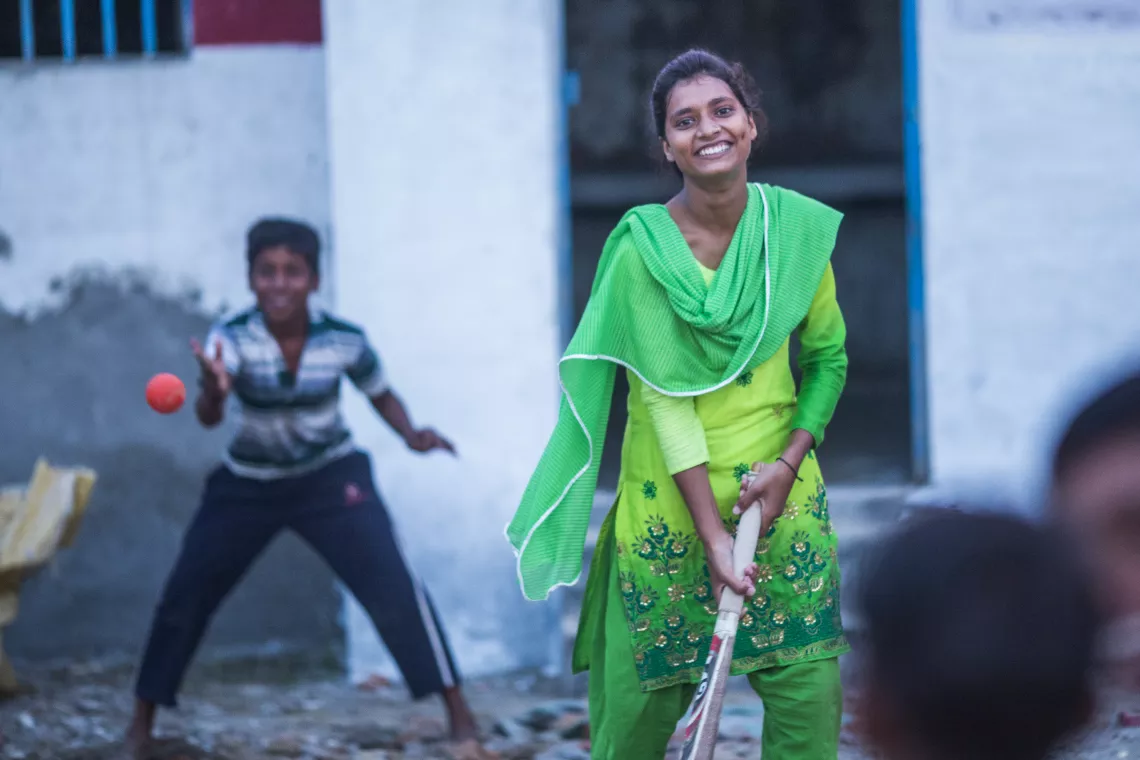Adolescent development and participation
UNICEF is working to engage and empower adolescents in India to be the next generation of leaders and change makers.

- Available in:
- English
- हिंदी
Empowering adolescent girls and boys in India
India has the largest adolescent population in the world, 253 million, and every fifth person is between 10 to 19 years. India stands to benefit socially, politically and economically if this large number of adolescents are safe, healthy, educated and equipped with information and life skills to support the country’s continued development.
Both adolescent girls and boys lack access to information on issues affecting their lives and have limited spaces to develop competencies crucial for active participation. Adolescent girls, especially, are exposed to multiple layers of vulnerability due to pernicious social norms affecting the value of girls, which in turn affects their ability to move freely and to make decisions affecting their work, education, marriage and social relationships.
Girls drop out before completing secondary education due to household responsibilities, marriage, child labour, limited relevance of education for employment and employability, distance to school and/or lack of sanitation facilities at the school. Menstruation disrupts the lives of girls in ways that are unimaginable in many countries.
Child marriage, a deeply rooted social norm, provides glaring evidence of widespread gender inequality and discrimination.
Girls who become pregnant as adolescents are at a higher risk of maternal and newborn disease and death.
Babies born from an adolescent mother are at an increased risk of being stunted in early childhood. This further leads to cognitive and physical deficits in young children and reduces productivity in adults.
Critical game changers in leveraging the potential of adolescents in India include postponing marriage, improving the health and nutritional status of adolescent girls, generating better education, skill development, work and citizenship opportunities for adolescent girls and boys.
The solution
UNICEF in collaboration with the Government of India, also seeks to build India’s 253 million adolescents as active participants, rather than passive beneficiaries, in the process of their empowerment. They are the leaders of today, not tomorrow. The aim is to develop their skills and bring their voices more prominently in the public domain so that they can influence policies and programmes concerning them now and in the future.
The aim is to institutionalise adolescent participation through formal platforms at the block, district, state and national level and through informal platforms such as youth-led networks. To stregnthen adolescent participation an equal number of girls and boys must participate. Engaging peer support leaders is key to adolescent participation and skilling. The focus is also on ensuring adolescents have opportunities to develop employable skills, both in school and out of school.

UNICEF is supporting the Ministry of Human Resource Development to develop an action plan for girls’ education and out of school children. This will be integrated in the education curriculum and pedagogy from age three to 19 years in all states. We also support state governments in rolling out their action plans for girls’ education and out of school children, as well as in developing skills frameworks.
Our aim is social policy that best supports the adolescent transition to adulthood, such as integrating technical and non-cognitive skills competencies for a better transition to work, providing information on market opportunities and linking training programmes to tangible workforce chances. Such policies would also protect adolescents from child marriage, child labour, civil strife and other harmful influences.
UNICEF engages with various youth-led networks and is building the capacity of district administrations and community structures to raise awareness on adolescents’ rights through reference groups and by creating adolescent-centric, experience-based learning tools.
We work with key influencers, constituencies such as parliamentarians, faith-based organizations, media, private sector and community structures so that they have the capacities and skills to engage adolescent girls, boys, parents and community influencers to improve the well-being of adolescent girls and boys everywhere.
